The Trump administration has disrupted a longstanding bipartisan consensus on U.S. policy toward China, which it viewed as overly timid and insufficiently robust in responding to China’s excesses. Although past policy shifted based on events, it largely was grounded in a judgment that U.S. interests would be served by a constructive relationship with China that mitigated risk of conflict and maximized opportunities for cooperation in areas of converging interests, such as North Korea and climate change.
U.S. policy toward China now appears animated by a judgment that the past trajectory of the bilateral relationship favored China and disadvantaged the United States in a long-run competition for global leadership. To try to break that trajectory, the Trump administration over the past two years has adopted an increasingly zero-sum, unilateralist, protectionist, and nativist “America first” approach to the relationship. But if the aim is to influence Chinese behavior, the administration will need to demonstrate considerably more focus in strategic thinking, time, resources, and coordination with partners.
An attitude without a strategy
This approach was clearest in Vice President Pence’s October 4, 2018, speech on China. The speech, and subsequent comments by the vice president during his November 2018 trip to Asia, made clear that the United States intends to confront China until Beijing changes its behavior on a wide range of well-known and longstanding concerns. These include discriminatory trade barriers, forced technology transfer, militarization of outposts in the South China Sea, pressure on Taiwan, human rights and religious freedom, government-sponsored cyber-enabled economic espionage, and Chinese interference in other countries’ political systems.
What is less clear, however, is whether the Trump administration’s objectives are to compel China to alter its behavior in specific issue areas of concern, to “decouple” the American economy from China’s through supply chain diversification, or to obstruct China’s rise. It is possible to find public statements from the president and his senior advisors that could be interpreted as advocating for all three of these potential objectives, sometimes on the same day.
There also is little clarity on the Trump administration’s strategy for achieving its objectives. Trump administration officials often talk publicly and privately of their greater tolerance for friction with China and their willingness to push back on problematic Chinese behavior. Such comments reflect an attitude, but not a strategy.
There similarly is no discernible pattern of American behavior in pursuit of discrete objectives. Whereas conventional administrations devote considerable bandwidth to establishing priorities in the U.S.-China relationship, assessing opportunity costs and tradeoffs, and deciding on timing and sequencing of actions to advance those priorities, this administration appears far less encumbered by such questions.
Instead, the vice president’s public statement on China appears to have established a permissive environment for departments and agencies to pursue actions relating to China as they see fit. The net result has been a jumble of seemingly uncoordinated actions, the most notable of which was Canada’s arrest of Huawei’s chief financial officer at the request of U.S. authorities on the same day that President Trump was hailing major breakthroughs in his meeting with President Xi Jinping at the G-20 meeting in Argentina.
The Trump administration also has reimagined the role of diplomacy in the bilateral relationship. Gone are the days of regularly-scheduled dialogues, which the Trump administration views as laborious, unproductive, and doing more to legitimize the Communist Party leadership than to deliver benefits to the American people. Instead of cultivating bilateral connections in order to manage tensions, address differences, and identify opportunities, the Trump administration considers senior-level bilateral meetings below the presidential level as venues to accept Chinese concessions. Diplomacy has largely given way to unilateral, unidirectional American demands, often done publicly.
Diplomacy has largely given way to unilateral, unidirectional American demands, often done publicly.
While this new and different approach has succeeded in setting a new tone for the relationship, it has not yet secured many tangible results. The brightest area of cooperation for a period was North Korea, but the shared spirit behind such efforts dissipated along with North Korea’s cessation of nuclear and missile tests, Trump’s invocation of unilateral tariffs against China, and Xi’s efforts to fortify relations with Kim Jong-un following Trump’s embrace of the North Korean leader. Secretary Pompeo’s October 8, 2018, visit to Beijing for the express purpose of advancing cooperation on North Korea was a lead balloon; no visible progress has been made to deepen U.S.-China cooperation on North Korea since.
China has been undaunted in its efforts to militarize outposts in the South China Sea. The cross-Strait situation is growing tenser. China is becoming more brazen in its disregard of American concerns on human rights and religious freedom. China appears to have resumed cyber-enabled economic espionage for commercial gain against the United States, after a cessation of such activities at the end of the Obama administration. The flow of fentanyl from China into the United States has persisted at high levels, but hopefully the situation will improve following a verbal agreement by President Trump and Xi in their meeting in Argentina to stem the problem. The bilateral trade deficit has ballooned, and Chinese investment flows into the United States have plummeted. And bilateral cooperation on common challenges such as climate change, nonproliferation, and pandemic disease prevention has virtually ceased.
Economic diplomacy with China
The United States has legitimate trade and investment complaints with China. The most important of these is market access. China’s average tariff rate of 7.5 percent is similar to that of other major trading nations, but the average disguises some high barriers in key sectors—for example, 25-percent tariff on autos for many years, recently reduced to a still-high 15 percent. China has been slow to further open this system over the past decade. China is also more restrictive towards direct investment than other large emerging markets, requiring foreign firms to operate through joint ventures in sectors such as autos, financial services, and telecom. These joint venture requirements force foreign investors to transfer their technology to Chinese firms, often state enterprises, on unfavorable terms. American firms generally understand the risk in complying with demands to transfer technology, but often fear they have few alternatives, given that refusing to do so could result in their being locked out of the China market.
There are other industrial policies that impinge on trade and investment. One-quarter to one-third of China’s economy consists of state enterprises that receive favorable treatment from banks (also state owned) and the government. These enterprises are not particularly involved in China’s export success, but the largest ones are going global and their investment around the world is more strategic than commercial. Chinese policies to protect these firms in the domestic market create tension with the U.S. and other market economies.
Finally, the United States has made an issue of its trade deficit with China. China has a large bilateral surplus with the United States because it imports petroleum and raw materials from the developing world and exports manufactured goods to the United States. It is not clear that there is much China could do to significantly reduce the U.S. deficit, especially given the fiscal stimulus in the United States that is leading to rising deficits with all partners. Through October, the U.S. global trade deficit overall was up 11 percent from the year before; with Canada and Mexico, up 15 percent; with the European Union, up 15 percent; with China, up 11 percent. China’s overall trade balance with the rest of the world is close to zero, so China is no longer the counterpart to the large U.S. deficit; that role is played by Germany, Japan, South Korea, Taiwan, and others—the world’s leading trade surplus nations.
In response to these economic issues, the Trump’s administration’s approach to bilateral diplomacy has been scatter-shot and inconsistent. The United States has imposed tariffs on imports from China, then suspended the increase in the tariffs scheduled for January 1, then announced the increase would go into effect March 2. The United States imposed what is essentially the death penalty (a large fine from the Commerce Department) on the Chinese firm ZTE for violating U.S. sanctions on Iran, before President Trump intervened to save ZTE. The chief financial officer of Huawei was arrested in Canada at U.S. request. Then President Trump indicated that he might intervene in the case if there is a good trade deal. Financial markets have been whip-sawed as the administration blows hot and cold on trade and investment issues. A contrasting area of consistency has been the tightening of U.S. investment and export restrictions in high-tech sectors through new legislation. But overall, bilateral policy has been inconsistent and ineffective.
Financial markets have been whip-sawed as the administration blows hot and cold on trade and investment issues.
Multilateral approaches to deal with China have been non-existent. The United States pulled out of the Trans-Pacific Partnership trade agreement (TPP), which was designed to address many of the issues raised by state capitalist systems—state enterprises, intellectual property right protection, investment openness, to name a few. The United States has been undermining the World Trade Organization (WTO) by refusing to appoint new appellate judges. While the WTO’s record has been disappointing in holding China to the letter and spirit of its commitments, partners such as Japan and the EU would like to strengthen its capacities, while the United States is rendering it increasingly irrelevant.
The inconsistency and failure of U.S. economic diplomacy towards China flow in part from a lack of consensus on objectives. One can detect in the administration elements of three distinct approaches towards economic issues with China:
- Seek massive restructuring of the Chinese economy. The United States has provided a long and detailed list of demands for opening and policy reform and some of the rhetoric from the administration suggests that China needs to capitulate completely in order to reach a deal. This is unrealistic, as China is not going to completely change its system within a short time.
- Promote de-coupling of the U.S. economy from China. Some advisors recognize that China is not going to change and advocate treating the relationship as if it were part of a new cold war, in which Washington aims to isolate and contain China. In this view, the United States should impose high trade and investment barriers and keep them in place to encourage U.S. firms and consumers to wean themselves off China. The problem with this approach is that our allies and partners are not going to follow us down this road. For almost all of them, China is a bigger trading partner than the United States is, and a faster growing one. There would be huge economic costs to decoupling, and it would lead to an unstable world of competing economic institutions and blocs.
- Practical compromise based on continued gradual opening. Markets are nervous at the moment because there is no obvious off-ramp to the trade war. Even if there is some kind of short-run deal, it is not likely to last because many of the underlying issues will continue to fester.
There would be huge economic costs to decoupling.
Although the approach is inconsistent, the combination of Trump’s tolerance for trade friction and possible softening in China’s economic outlook could yet still present opportunities to press China through time-bound negotiations to gain market access and some restructuring. If achieved, such progress would be noteworthy and commendable. But to get there, the United States will need a clear strategy, coordinated with allies, as to what is acceptable opening and reform to maintain the economic relationship. Washington also will need to convince Beijing that addressing irritants on the trade front would lead to improvements in the overall relationship.
Loss of leverage
The U.S.-China relationship does not occur in a vacuum. America’s ability to influence how Chinese leaders identify and pursue their interests is strengthened when allies and partners amplify American efforts, and diminished when the United States acts alone. President Trump and his senior advisors, notably National Security Advisor John Bolton and Secretary of State Mike Pompeo, have shown disdain for multilateralism. Favorable views of the United States are at historic lows in most countries where the Pew Research Center does polling. And despite shared concerns among many of America’s closest allies about China’s behavior, there has been little coordinated action to address such concerns. When there has been joint pressure, such as in a joint letter of concern about human rights abuses in Xinjiang, the United States has been notably absent. One key exception, however, was the December 20 U.S. censure of Chinese officials for engaging in cyber-espionage, which attracted public support from America’s “Five Eyes” intelligence partners (the United Kingdom, Canada, Australia, and New Zealand).
There also has not been a clear articulation of American strategy in Asia that could attract allies and partners to pull closer to the United States in contesting Chinese behaviors of concern. Washington’s signature initiative in the region, the Free and Open Indo-Pacific strategy, remains primarily a set of slogans lacking both in substance and visible support from President Trump. Washington has driven up negative perceptions of China’s Belt and Road Initiative, but has yet to articulate an alternative for countries that are in need of infrastructure. America’s withdrawal from the Trans-Pacific Partnership blew a hole in U.S. economic and commercial influence in East Asia that has not yet been filled with any bilateral or multilateral trade initiatives. America’s traditional partners, such as Japan, South Korea, and Germany, are reluctant to partner visibly with the United States, in part due to concern that Trump could change his mind on China, cut a trade deal with Xi, and leave them holding the bag.
Indeed, our partners in a number of cases have been hedging, improving relations with China and pulling their punches. To secure the type of international support that will be necessary to influence Chinese behavior, the administration will need to demonstrate a level of focus in strategic thinking, time, resources, and coordination with partners that has not been visible in the first two years.
The Brookings Institution is committed to quality, independence, and impact.
We are supported by a diverse array of funders. In line with our values and policies, each Brookings publication represents the sole views of its author(s).

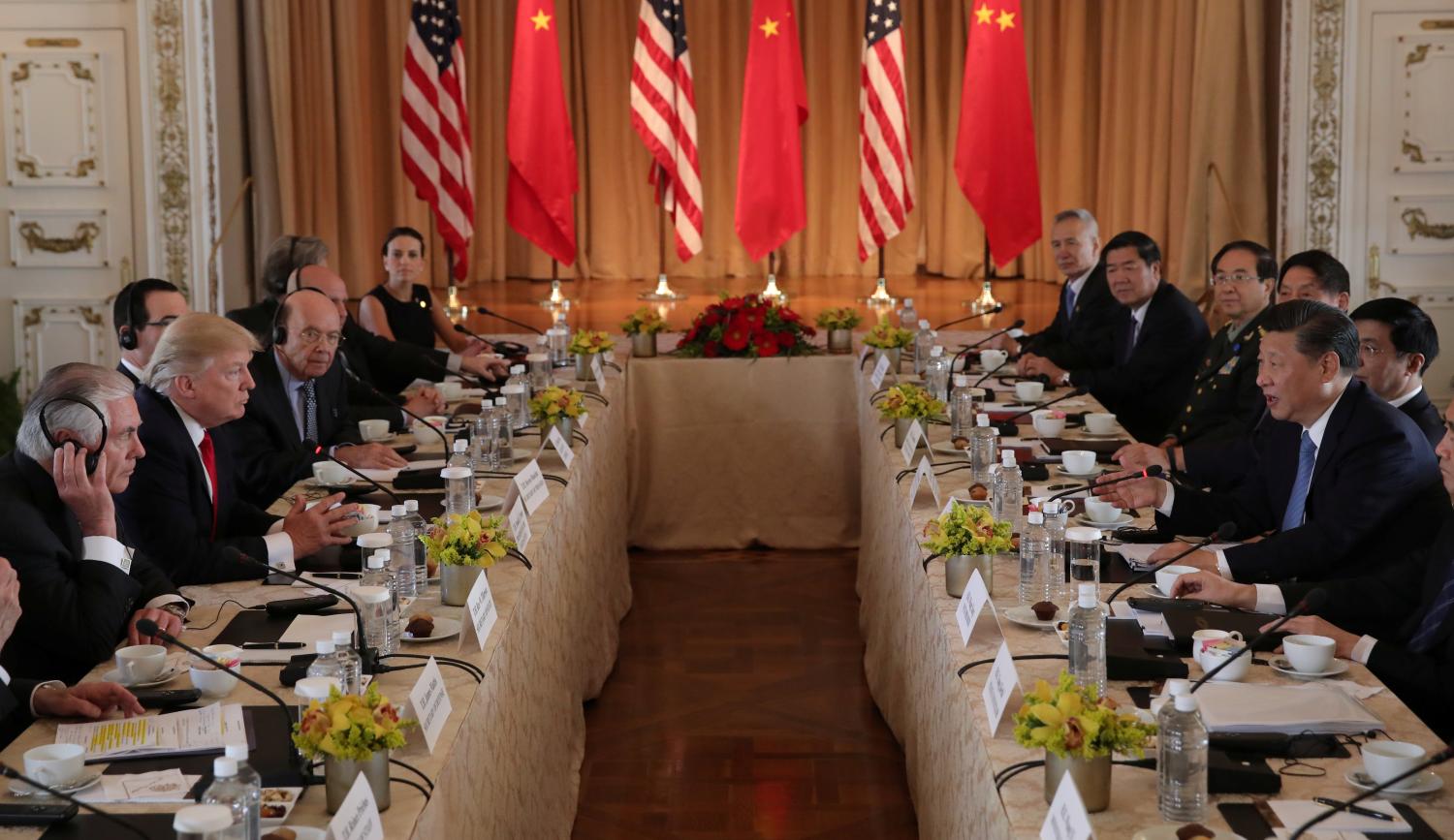
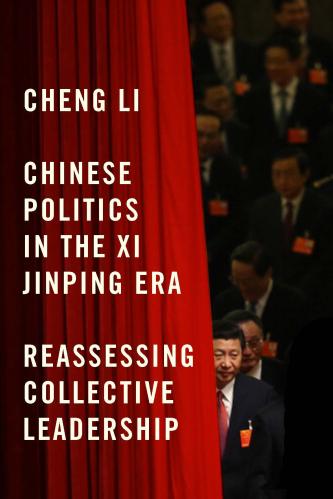
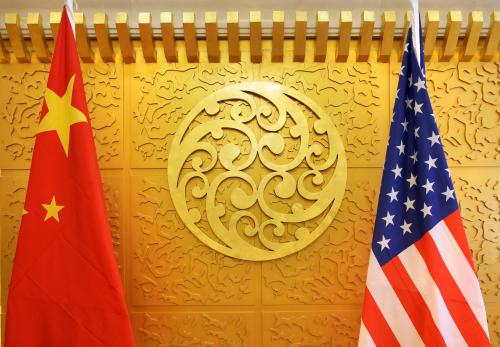
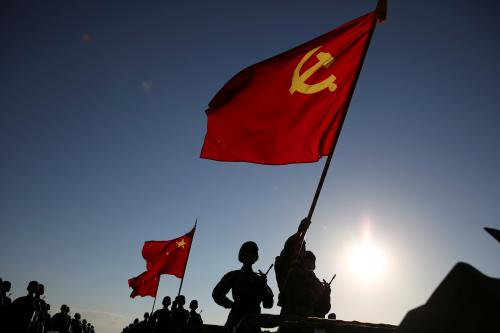
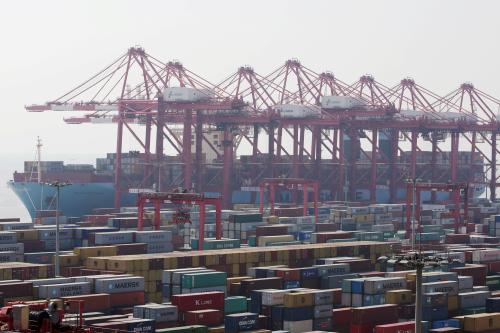






Commentary
Assessing U.S.-China relations 2 years into the Trump presidency
January 15, 2019